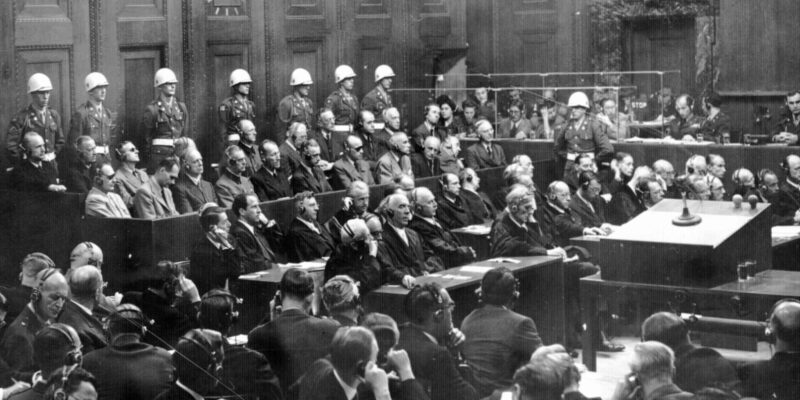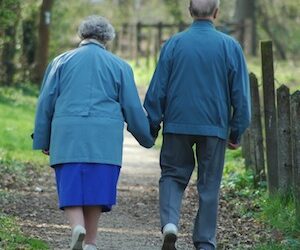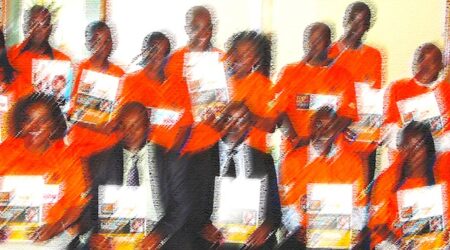The International Criminal Court (ICC) in The Hague is one of the modern era’s oldest ideas and newest institutions of global governance. Since its founding in July 2002, the Court has promised an end to impunity for crimes that “shock the conscience of humanity” and deny justice for their victims. Since then, the court has generated significant controversy, but little empirically grounded social-scientific research has examined the court’s operations. Indeed, few empirical studies have been able to evaluate the Court’s performance, especially regarding its groundbreaking victims regime, which enables victims to participate directly in the process and become eligible for reparations.
Thanks in large part to UC Berkeley researchers, however, there is today a growing body of data to fill this gap. In June 2014, Berkeley’s Human Rights Center (HRC) published the latest in a line of reports intended to evaluate the Court against its lofty expectations and, ultimately, help it deliver justice to those in need.
Unlike its predecessors (such as the United Nations-backed international tribunals for the former Yugoslavia and Rwanda), the ICC was intended to be a “victim-friendly court”, with procedures for victims’ participation and reparation written into its founding document, the Rome Statute. Little was known, however, about how these procedures would actually affect the victims and communities in whose name they were established. Observers wondered how victims of war crimes, crimes against humanity, and genocide would react to a foreign court intervening on their behalf. And many critics worried that victims from some of the most war-torn countries in the world could further endanger themselves by testifying against powerful leaders and warlords from their communities.
The victims who testify at The Hague—whether in-person or via video link—often come from circumstances of extreme vulnerability, where the roots of violence can persist long after fighting has ended. Some have lost their entire families. Many have never been outside their country, let alone flown on a plane.
In 2004, researchers at the UC Berkeley Human Rights Center began to deploy teams of data collectors to the countries where the ICC was conducting its first investigations. Their goal was to employ rigorous data collection to help the Court and its observers learn more about the people who lived there—in places like northern Uganda, home to Joseph Kony’s Lord’s Resistance Army, and eastern Democratic Republic of the Congo, home to the world’s deadliest conflict since the Second World War. These surveys provided rich, multidimensional data that helped the Court better understand victims’ needs and priorities. They also complicated the ICC’s picture, revealing that after mass atrocity, individuals and communities demand basic needs like security, food, and shelter, along with – and sometimes over – justice.
I want to fight against impunity. I want justice to be done.
Last year, the HRC launched a new program in continuation of this broader tradition, under the direction of Stephen Smith Cody, who holds a JD and PhD in sociology from Berkeley. The Atrocity Response Program works to bring advances in science and technology to bear on international criminal investigations and protect the victims and witnesses of the worst human rights crimes. As Smith writes, “Witnesses who testify at the International Criminal Court (ICC) against accused war criminals often take great risks to do so. Yet, until now, their voices have been missing from discussions about how the ICC is fulfilling its responsibility to prepare and protect those who testify.”
In response, Smith and his team worked with the ICC’s Victims and Witnesses Unit (VWU)—the unit responsible for meeting witnesses’ needs—to design and implement a three-stage survey of witnesses from two of the Court’s first cases. Using a standardized set of questions designed by the HRC, VWU staff interviewed witnesses about their experiences (1) before, (2) immediately after and (3) around six months after testifying. In the first report to be published from this research, “Bearing Witness at the International Criminal Court,” the HRC has highlighted again that the label “victims” entails a far more complicated and heterogeneous reality than it suggests.
Witnesses testify for different reasons—some for justice, others out of a sense of duty. “I felt like I was letting go of something I’d been holding on to,” said one witness. Another explained, “I want to fight against impunity. I want justice to be done.” Overall, Cody and his team found that those who testify at the Court have largely positive experiences. In the immediate post-testimony interviews, most said that they had personally benefited from testifying and felt good about the services provided them by VWU. Said one witness, “All the information, preparation, and advice I received helped me a lot. This made it easier for me during my testimony period.”
This is a significant result, especially given the recent revelation that one VWU staff member had in fact sexually assaulted four victims the unit was supposed to have been protecting.
Still, HRC found important nuances, such as differences between men and women. For instance, female witnesses were less likely than male witnesses to report that their testimony helped achieve justice: 60 percent of women thought their testimony would help establish the truth or achieve justice, compared with just under 80 percent of men. Moreover, the study was limited by the security situation and remoteness of the witnesses’ homes, making the six-month follow-up interview difficult to administer. Whereas, for instance, 109 witnesses responded to the first two surveys, fewer than half responded to the third because VWU staff were unable to reach them. This is significant, Cody notes, since much of the criticism of the ICC’s victims regime stems from questions about its ability to truly protect witnesses once they have returned home. Indeed, three witnesses from the ICC’s trials against Congolese warlord Thomas Lubanga Dyilo requested asylum in the Netherlands after testifying for fear of reprisals back home.
In the HRC study, moreover, one witness reported: “I was worried about my security, [and] that the protective measures were not enough.” Another explained, “I am afraid that the accused knows me, even though he could not see me. Therefore, the security of me and my family cannot be guaranteed.”
The lack of data on such long-term risk is thus a significant limitation and also raises questions about the ways that international organizations like the ICC can effectively govern those in whose name they act, especially when they are no longer needed by the organization (in this case, to testify). This, however, is where social scientists can help. Indeed, the Atrocity Response Program is ongoing and will continue to send researchers to the field. The next report will focus on victims who participate in trials, not necessarily as witnesses but as civil parties. As such, UC Berkeley’s Human Rights Center will continue to produce empirically grounded reports to help close the gap between the work of international justice institutions and our understanding of their work in practice.



